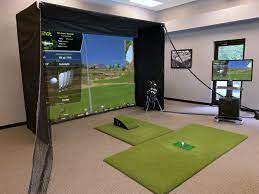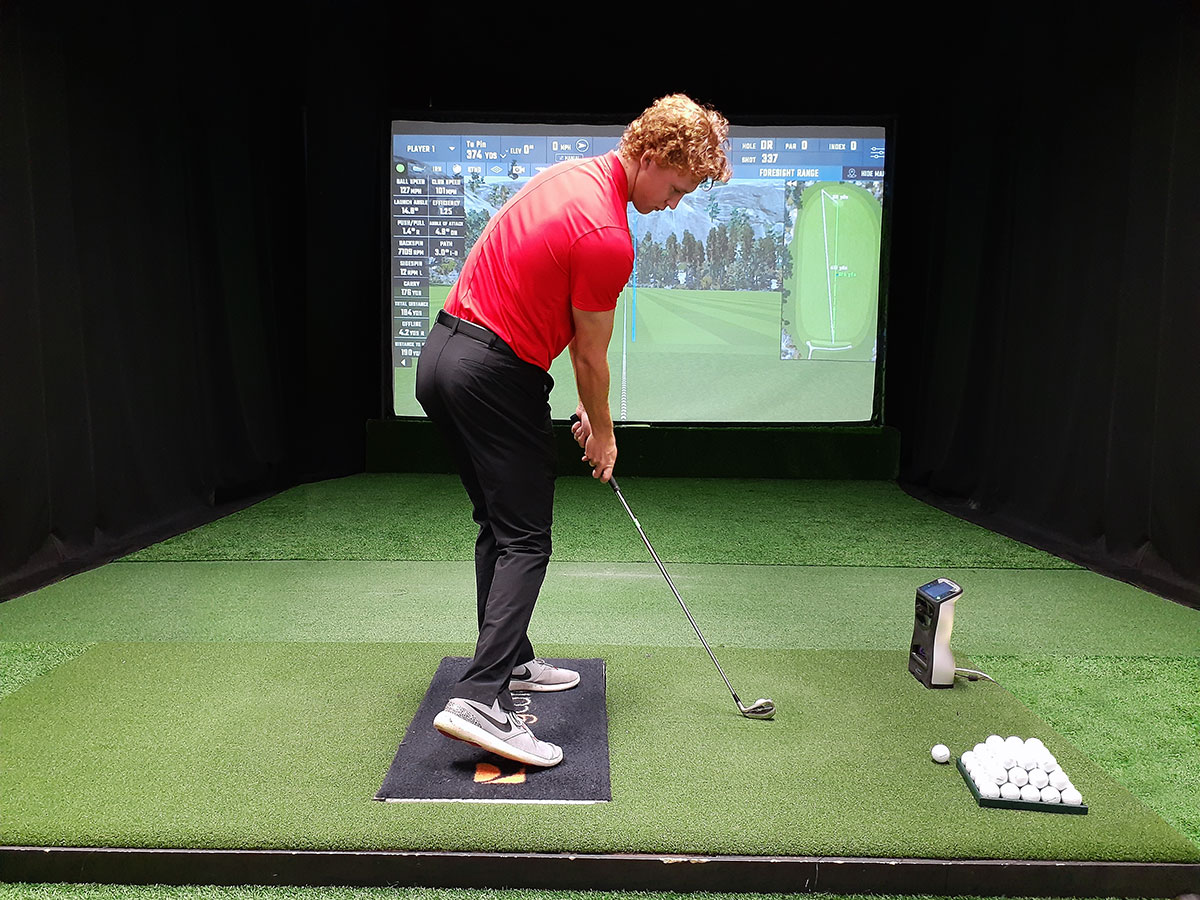Creating the perfect indoor golf cove involves careful consideration of both architectural and interior design elements. From optimizing space utilization to creating a comfortable and immersive environment, various factors contribute to designing an ideal indoor golf experience. Here, we explore key architectural and interior design considerations to ensure the functionality, aesthetics, and overall appeal of an indoor golf bay.
- Space Planning and Layout:
Optimal Dimensions: Design the bay with sufficient space for swinging clubs comfortably without obstruction.
Traffic Flow: Arrange furniture and equipment to facilitate easy movement within the bay and ensure safety during play.
Multiple Bays: If space permits, consider designing multiple bays to accommodate simultaneous play or group sessions.
- Lighting and Ambiance:
Natural Light: Maximize natural light by positioning the bay near windows or incorporating skylights to create a bright and airy atmosphere.
Artificial Lighting: Install adjustable lighting fixtures to ensure proper illumination for playing conditions and enhance the overall ambiance.
Mood Lighting: Incorporate customizable mood lighting options to create different atmospheres, such as simulating outdoor courses or evening play.

- Flooring and Surface Materials:
Shock Absorption: Choose flooring materials with shock-absorbing properties to reduce impact on joints and prevent damage from club strikes.
Durability: Select durable surfaces that can withstand frequent foot traffic and golf swings, such as rubberized flooring or commercial-grade carpeting.
Grip Support: Ensure proper grip support for golf shoes by opting for textured or non-slip flooring materials.
- Acoustic Treatment:
Noise Reduction: Incorporate acoustic panels or sound-absorbing materials to minimize noise transmission within the bay and adjacent spaces.
Audio Enhancement: Integrate audio systems for playing background music or simulating ambient sounds of outdoor courses, enhancing the immersive experience.
- Climate Control:
Temperature Regulation: Install heating and cooling systems to maintain a comfortable climate year-round, ensuring optimal playing conditions regardless of external weather.
Humidity Management: Control humidity levels to prevent moisture buildup and protect equipment from damage, particularly in enclosed indoor environments.
- Technology Integration:
Projection Screens: Install high-quality projection screens or video walls to display virtual golf courses and shot data, providing players with visual feedback and immersive gameplay.
Simulator Software: Invest in advanced simulator software with realistic graphics, accurate ball tracking, and customizable settings to enhance the gaming experience.
Data Connectivity: Ensure seamless integration with digital devices and internet connectivity for accessing online resources, updating software, and sharing gameplay results.
- Storage and Organization:
Equipment Storage: Design dedicated storage areas for golf clubs, balls, tees, and other accessories to keep the space organized and clutter-free.
Multi-functional Furniture: Choose multi-functional furniture pieces, such as benches with built-in storage or retractable tables, to maximize space utilization and flexibility.
Conclusion:
Designing the ideal indoor golf bay requires a thoughtful blend of architectural and interior design considerations to create a space that is functional, visually appealing, and conducive to an immersive golfing experience. By addressing factors such as space planning, lighting, flooring, acoustics, technology integration, and personalization, designers can craft indoor golf bays that meet the needs and expectations of golf enthusiasts while providing a unique and enjoyable recreational environment.
